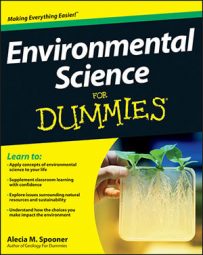The environmental damage caused by surface mining is related to the large amount of surface material that humans remove during mining operations. The environmental effects of surface mining include
Habitat destruction
Soil erosion
Air pollution from dust particulates
Pollution (especially from sediments)
All surface mining techniques negatively affect the environment, though some methods are more damaging than others.
Strip mining
Strip mining, as the name describes, is a process of removing rock and soil in strips to get to the valuable mineral ores below. After miners extract the resources, they put back the leftover rock and soil, called mining spoils or tailings, to fill in the hole.
One way to replace tailings is to simply dump them; luckily, U.S. regulations require mining companies to replace tailings in a way that restores the landscape (and ecosystem) more closely to its pre-mined state, even though doing so is often expensive and difficult. When tailings aren’t restored properly, they’re often left in valleys where they cause flooding and disrupt watershed ecosystems with water pollution and increased sediments.
Mountaintop removal mining
Mountaintop removal mining is similar to the strip mining approach in the preceding section but on a much larger scale. This technique removes large amounts of rock and soil — whole mountaintops — to access the resources buried deep inside the mountain.
The mountaintop material is left in surrounding areas of lower elevation, such as nearby river and stream valleys, where it reshapes the landscape, pollutes water, and disrupts ecosystems. The figure illustrates how mountaintop removal mining dramatically changes a mountainous landscape.
![[Credit: Photograph by Getty Images/Pete Mcbride]](https://www.dummies.com/wp-content/uploads/338283.image0.jpg)
Pit mining
Sometimes valuable geologic resources appear at the surface of the Earth but extend deeper into the Earth — sort of a tip-of-the-iceberg kind of thing. In this situation, pit mining (also called open-pit mining) is an option. Pit mining involves digging a large hole to gather rocks and minerals from the Earth’s crust.
Pit mines extend both into the ground and across the surface and are some of the largest mine operations in the world. Like other surface mining operations that remove materials, pit mining operations scar the landscape, destroy habitat, and pollute the air with dust and particulates.
Placer mining
Placer mining is a way of obtaining mineral and metal resources from loose river sediments. The water helps sift the valuable resources (such as gemstones or gold) from the sand, mud, and gravel in the riverbed. Placer mining occurs on a much smaller scale than other methods of surface mining.
Whereas other methods go straight to the source of the valuable material, the sought-after materials in placer mining have already been removed from their source by natural processes of erosion and weathering and have been carried downstream. Due to the smaller scale of placer mining, it does less damage to the surrounding environment compared to other methods of surface mining, though it can still disrupt river ecosystems with pollution and sediments.
In some places, such as the Yukon Territory in Canada where placer mining is common, miners make an effort to maintain the water quality by periodically testing for pollution and sediment overload. In some areas, miners have even developed placer mining systems that recycle the water used to sift gold so that polluted water isn’t discharged back into the environment.

